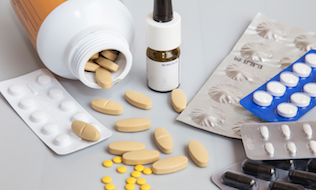

Prescription drug costs for public drug plans covering most of Canada increased 7.4 per cent in 2017/18 to reach $11.4 billion, according to a new report by the Patented Medicine Prices Review Board.
It’s a significant increase compared to the more modest 1.9 per cent growth in prescription drug costs from 2016/17.
The board looked at data from the National Prescription Drug Utilization Information System database, which includes data from all provinces and territories, except the Northwest Territories, Nunavut and Quebec. It also includes the non-insured health benefits program, which provides health coverage to First Nations and Inuit people.
Read: What will PMPRB drug pricing changes mean for plan sponsors?
The PMPRB found that, between 2014/15 and 2017/18, the total prescription drug costs for those public drug plans had risen by $2 billion, for a compound annual growth rate of 6.6 per cent. In 2017/18, actual drug costs represented 80 per cent of the expenditures and grew at a rate of 8.3 per cent. Dispensing costs made up the remaining 20 per cent of total spending and grew by 3.8 per cent.
The increasing use of higher-cost drugs, including direct-acting antiviral drugs for hepatitis C, drove costs up by 7.1 per cent. The introduction of the OHIP+ program also contributed to the higher numbers, representing a 2.5 per cent increase in total prescription drug expenses in Ontario and a 1.4 per cent increase for all NPDUIS public drug plans for the 2017/18 fiscal year.
The patented market segment also saw a sharp increase in prices, with a 19.3 per cent rise in costs for medicines exceeding $10,000 in annual treatment expenses, noted the PMPRB. While those drugs were used by less than two per cent of public plan beneficiaries, they accounted for more than 30 per cent of plans’ total drug costs.
Read: Plan sponsors using generic substitution, co-payments to curb drug plan costs: report
Public plans did see some benefits from price reductions, as well as generic and biosimilar substitutions, but not much. The PMPRB noted these drugs’ impact on the plans are decreasing, with a negative 2.4 per cent impact in 2017/18.
In total, 277 million prescriptions were dispensed to almost seven million active beneficiaries in 2017/18, and the plans paid an average 87 per cent of total prescription costs.
